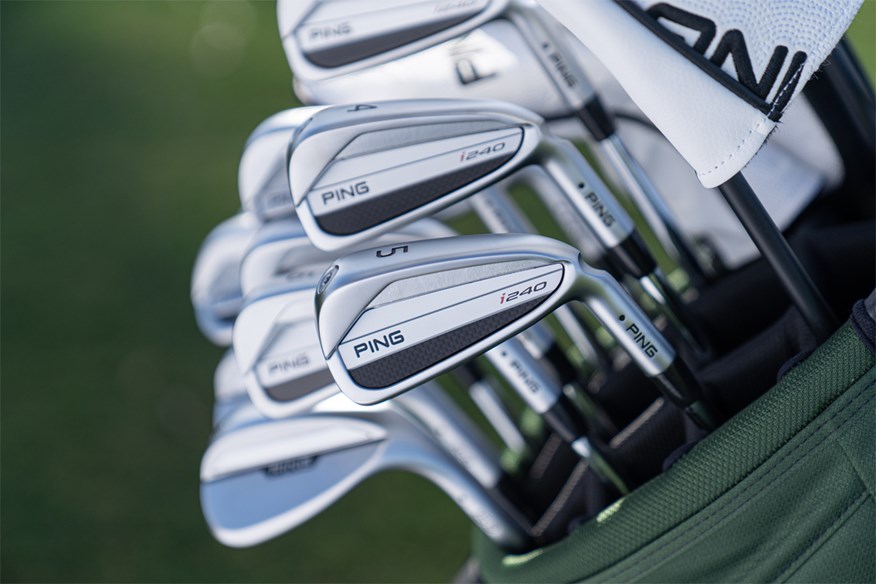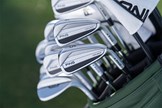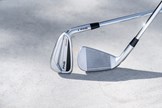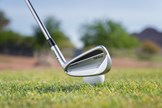Why the new Ping i240 irons will divide opinion
Last updated:
Ping i irons have been hugely popular with tour pros and amateurs alike over the last decade. Now in their fourth generation, they’re changing. Here’s everything you need to know about the new Ping i240 irons.
The 2022 Ping i230 irons were a runaway success thanks to their precision, consistency, and player-focused design. Built for low to mid-handicappers, they offer a forged-like feel in a compact, tour-inspired head that delivers premium performance. Pros like Tyrrell Hatton have trusted them on tour, which only adds to their reputation as one of the best players’ irons to date.
It also means the new Ping i240 irons have some big shoes to fill.
The Ping i240s should suit a wider audience of golfers, thanks to higher MOI, tighter dispersion, and softer feel.
“The new i240 irons are engineered to appeal to a wide range of skill levels,” said John K. Solheim, Ping CEO & President. “They provide precision and control with a great feel, so they technically fit into the ‘players’ iron’ category. But they also offer the MOI and higher launch of a game-improvement iron. We’ve designed it with more of a true cavity-back look to inform golfers of its forgiveness properties. They are a great solution for avid players who like the look, feel, and performance of a blade-style iron but can also benefit from added forgiveness when they aren’t as precise with their ball striking. They pack a lot of performance into one model.”
Ping i240 irons
Pros
- Improved, softer feel
- Suits a wider level of golfers
Cons
- Aesthetics of the irons may not appeal to the traditionalist golfer
Let’s dive into the looks and tech of the new Ping i240 iron, and why I think these will split opinion.
Modern Cavity-Back Design
Ping’s i240 irons feature a traditional cavity-back design that blends classic aesthetics with modern engineering. The clean, players’ profile conceals advanced perimeter weighting, offering both precision and forgiveness. A redesigned cavity badge and activated elastomer insert enable Ping’s engineers to save weight, which is strategically redistributed to lower the centre of gravity. The result is improved launch and distance control, particularly in the long and mid irons. The weight savings also contribute to a higher moment of inertia (MOI), enhancing stability and forgiveness on off-center strikes.
The design is a step away from the Ping i230 and i210 irons of old, showcasing the forgiveness and multi-material construction, as opposed to a tour-friendly, sleek shelf appeal. Whilst this is understandable based on the aim of the iron, the shelf appeal of the Ping i240’s may disappoint some purist golfers. The i230s and i210 had the tour-proven look, so this is a significant step away from Ping. That being said, this redesign smartly separates the Ping i-family away from the Ping Blueprint series, allowing consumers to understand what each iron offers before being fit.
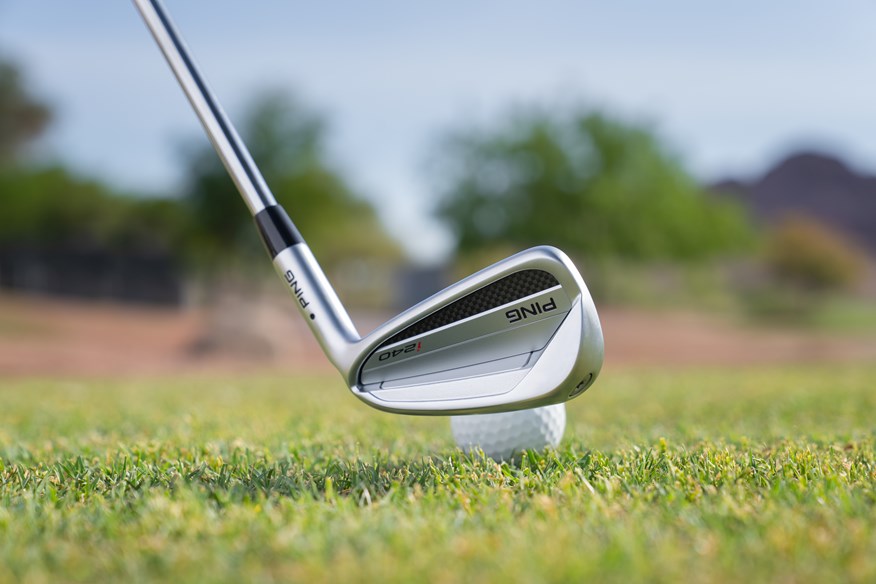
Softer at Impact, Better Feel
The Ping i240’s updated multi-material badge is a key innovation, weighing 8.5 grams less than its predecessor to improve performance. Crafted from a thin 304 stainless steel cap, lightweight composite, and injection-moulded thermoplastic, the badge works in tandem with an activated elastomer insert housed in a distinctive toaster-style pocket. This combination not only improves energy transfer across the entire clubface but also refines acoustics and feel. The result is a softer, more responsive feel across the face, paired with a more premium sound that will appeal to a wider range of golfers.
The sound and feel of Ping irons has seen great development over the last decade, especially in the players’ category. The latest Ping Blueprint offerings exemplified this, and you can expect the i240 irons to follow in their footsteps.

Tour-Inspired Performance
Ping used their tour roster to help create the i240 iron, listening to the requests from players to create a product that would suit them as well as amateur golfers.
Ping refined the face technology in the i240 irons, reintroducing fewer, wider grooves. This was a direct response to feedback from tour professionals seeking more spin from the fairway and reduced spin from the rough. The adjustment offers greater control and consistency, a key element for elite and amateur players.
They have preserved the compact, tour-inspired shape preferred by elite players, ensuring reliable distance and trajectory control. The sole design remains familiar, featuring a rounded leading edge and generous bounce. This combination promotes premium turf interaction, competing with the likes of Srixon ZX5 and TaylorMade P770.
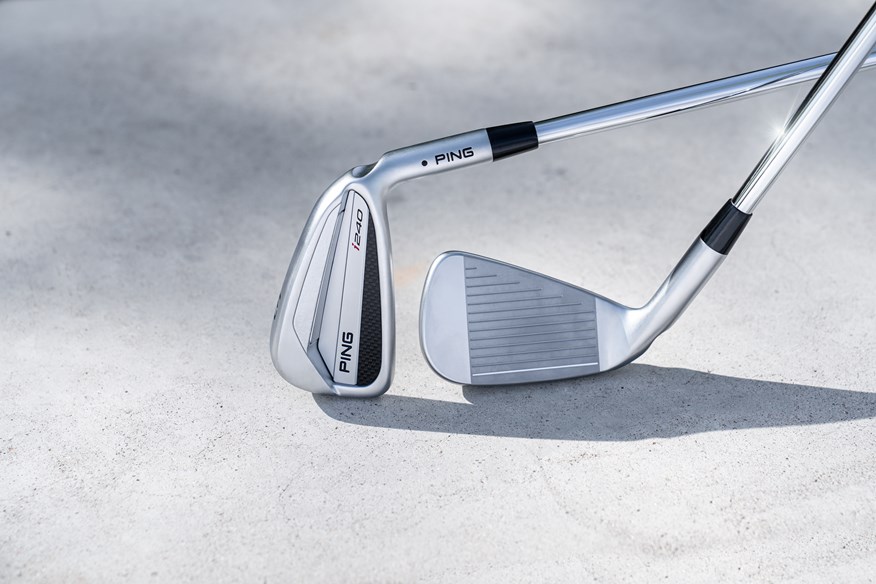
Ping i240 irons: The Specs
Price: £179 / $217 per iron
Launched: July 2025
Availability: 3-9, PW, UW in 10 color codes (RH/LH)
Loft options: Standard, Power Spec, and Retro Spec
Stock shafts: NS Pro Modus3 Tour 115 (R, S, X) & Ping Alta CB Blue (SR, R, S)
Stock grips: Golf Pride 360 Tour Velvet in six sizes (Blue -1/16″, Red -1/32″, Aqua -1/64″, White-Std, Gold +1/32″, Orange +1/16″)
| CLUB | LOFT (S/PS/RS) | LIE | LENGTH/ MS | SWING WEIGHT | LENGTH/ WMS | HAND |
| 4 | 22.5/22/24.5 | 61.00″ | 38.50″ | D2/D0 | 37.50″ | RH/LH |
| 5 | 26/25/28 | 61.50″ | 38.00″ | D2/D0 | 37.00″ | RH/LH |
| 6 | 29.5/28/31.5 | 62.00″ | 37.50″ | D2/D0 | 36.50″ | RH/LH |
| 7 | 33/31.5/35 | 62.50″ | 37.00″ | D2/D0 | 36.00″ | RH/LH |
| 8 | 37/35.5/39 | 63.00″ | 36.50″ | D2/D0 | 35.50″ | RH/LH |
| 9 | 41/40/43 | 63.50″ | 36.00″ | D2/D0 | 35.00″ | RH/LH |
| PW | 45/44.5/47 | 64.00″ | 35.75″ | D3/D1 | 34.75″ | RH/LH |
| AW | 50/49.5/52 | 64.00″ | 35.50″ | D3/D1 | 34.50″ | RH/LH |
NEXT: Read our full Ping i240 irons review
